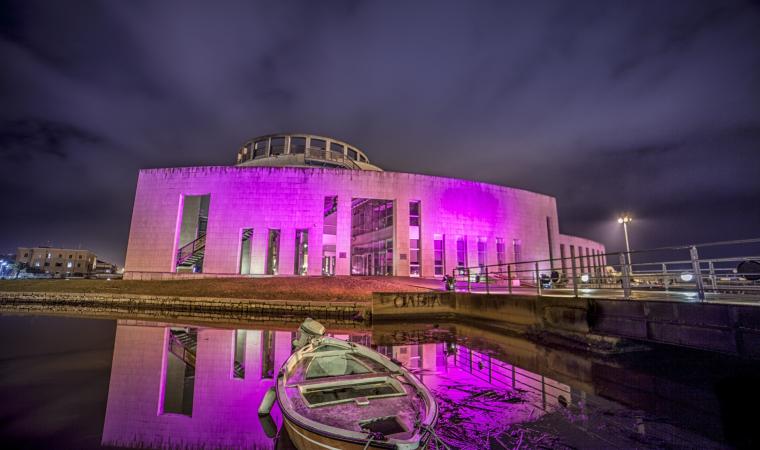Archaeological museum of Olbia
The history of Olbía, Greek for “happiness”, of its harbour and the thousands of years of layers of culture. On the small Peddone island a short walk from the old port is the archaeological museum of Olbia, the Gallura region’s main city, home to an exhaustive collection of relics from the ancient civilisations that thrived in Sardinia. As an homage to its location on the sea and the role the port city played in the island’s history, the museum is shaped like a ship at anchor, with portholes and hanging walkways. The exhibition is dedicated to the history of the port and city and focuses on the Phoenician, Greek, Punic, Roman, medieval, modern and contemporary eras. The museum has two levels. In the first hall on the ground floor are the ancient masts and rudders of real ships and the reconstruction of two laden cargo ships that were burned down during an attack by Vandals in about 450 CE. In the fourth room you will get a feeling, by way of a projection, of what the attack was like, with the sinking of eleven ships, an event that marked the end of the Roman era in Olbia. The second and third halls display other remains from the port, including a medieval shipwreck, the only one of its kind in Italy. A model of the harbour as it was in the 2nd century CE can be found in last hall. The first hall on the second floor focuses on pre-Nuragic and Nuragic eras, Phoenician settlement (750 BCE) and Greek occupation (630-520 BCE), when Olbia was the only Greek port in the western Mediterranean Sea. Greek relics were, of course, unearthed during digs here. The second hall is dedicated to the Carthaginians, symbolized by the granite stele featuring the goddess Tanit, and then the Romans. The third hall is home to terracottas, funerary items and amphorae dating to when the Punic civilization gave way to the Roman one, while the following room documents Olbia in full Rome era (from the mid-1st century BCE). You will see sculptures like the heads of the Emperor Domitian, the Empress Domitia and an extraordinary one of Hercules, the city’s most revered divinity. The fifth room deals with the relationship between Roman Olbia and the Mediterranean, as well as the traumatic advent of the Vandals. The items on display include clay lamps, coins, rings, necklaces and an Egyptian statue of the god Osiris. The last hall on the upper floor is devoted to the Byzantine era, when the city was reduced to a mere town, and then subsequent periods: as the capital of Gallura, during the Spanish-Aragonese period (when it was called Terranova), the Piedmontese era, during Italy’s unification and afterwards.

